- Anthony D'Amico
- Albums and Singles
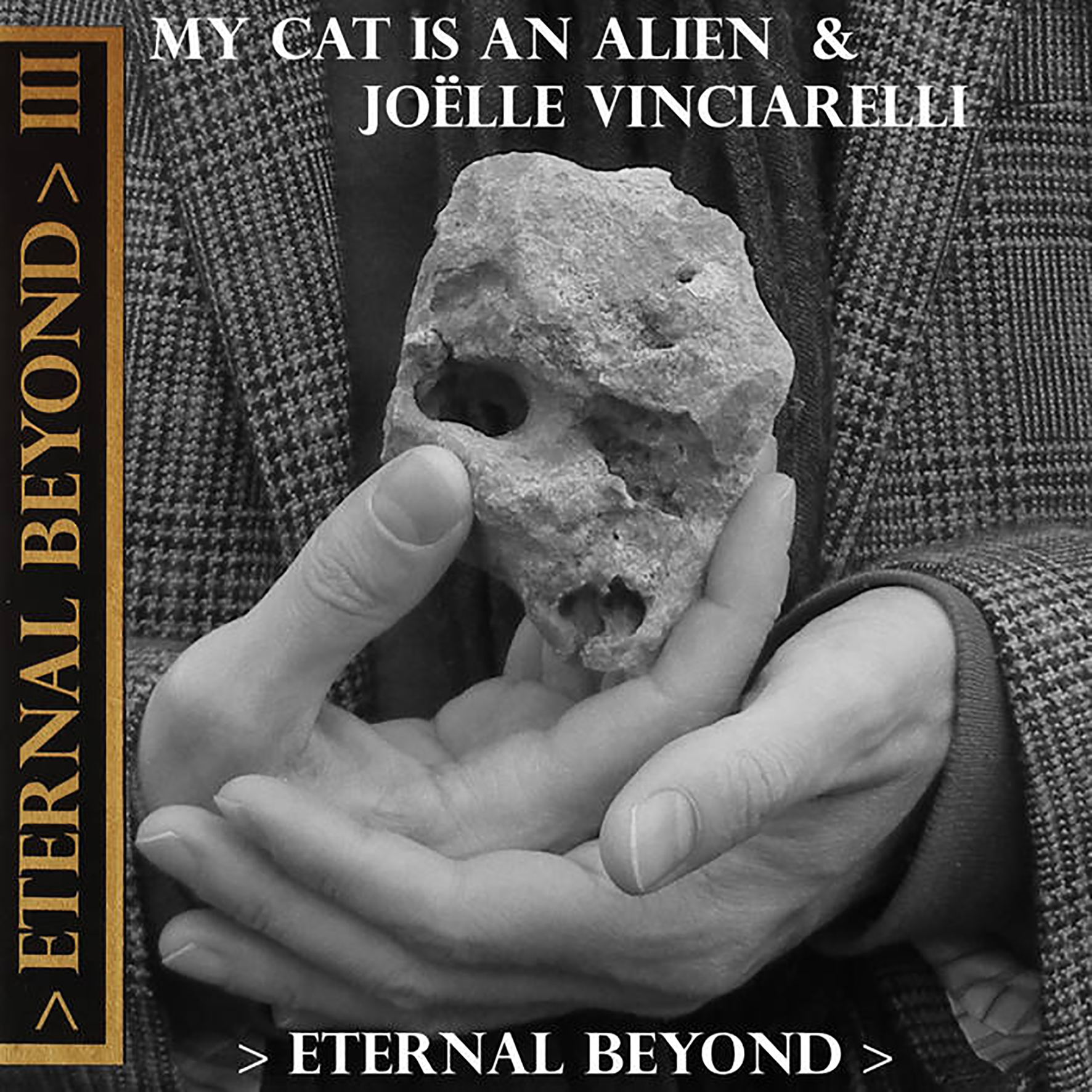 This is the third and final installment of the Opalio brothers' wild and oft-brilliant collaborations with Talweg/La Morte Young’s Joëlle Vinciarelli, as "according to arcane, ancient cultures, sometimes things must come to an end to be "Eternal."" While something wonderful tends to happen just about every single time these three artists convene, this Arthur Rimbaud-inspired installment is the one that the Opalios personally consider the best of the series (at the moment, at least). I do not think I could choose a favorite album from the trilogy, but the opening "Eternal Fanfare for the Warriors" is definitely one of my favorite MCIAA-related pieces to date. While the trio are currently unsure whether the conclusion of the trilogy is their collaborative swansong or just one phase in their continuing evolution, they can safely lay claim to having conjured some of the most visceral and unique sounds to reach my ears in recent memory. Vinciarelli's intensity and unusual collection of instruments is a perfect foil (and grounding force) for the Opalios' otherworldly psychedelia.
This is the third and final installment of the Opalio brothers' wild and oft-brilliant collaborations with Talweg/La Morte Young’s Joëlle Vinciarelli, as "according to arcane, ancient cultures, sometimes things must come to an end to be "Eternal."" While something wonderful tends to happen just about every single time these three artists convene, this Arthur Rimbaud-inspired installment is the one that the Opalios personally consider the best of the series (at the moment, at least). I do not think I could choose a favorite album from the trilogy, but the opening "Eternal Fanfare for the Warriors" is definitely one of my favorite MCIAA-related pieces to date. While the trio are currently unsure whether the conclusion of the trilogy is their collaborative swansong or just one phase in their continuing evolution, they can safely lay claim to having conjured some of the most visceral and unique sounds to reach my ears in recent memory. Vinciarelli's intensity and unusual collection of instruments is a perfect foil (and grounding force) for the Opalios' otherworldly psychedelia.
Elliptical Noise/Up Against the Wall, Motherfuckers!
This album combines two separate sessions recorded in Vinciarelli’s studio in the French Alps, which is notable because 2018’s two-part "Eternal Éternité" was spontaneously composed in a very different world than "Eternal Fanfare for the Warriors" (which dates from May 2020). On one level, that makes a lot of sense, as “Eternal Fanfare” has a certain go-for-broke intensity that befits such dark and troubling times, yet that interpretation cannot hold up in light of the similarly feral second half of "Eternal Éternité." In any case, both pieces are memorable for both their volcanic ferocity and their expanded sound palette (as far out as they are, the Opalios' vision inarguably features some eternally recurring and instantly recognizable elements). In the case of "Eternal Fanfare," however, the expected space ritual features a big surprise in the form of strangled trumpet squawking from Vinciarelli (along with some similarly unexpected sleigh bells from Maurizio). It is the exquisite feel of an ancient war procession passing through a rip in the dimensional fabric for a hissing, bleary, and lysergically smeared adventure into the unknown.
Naturally, the first half "Eternal Eternité" offers no respite at all from the cosmic phantasmagoria, as the album only becomes more of a harrowing mindfuck and there are no longer any friendly or familiar sounds like trumpets and sleigh bells to provide solid ground: just fifteen unnerving and unrepentant minutes of howling, dissonantly harmonized drones rising and falling. As radical art, it is admittedly impressive, but I prefer the more human-sounding terrain of the second half (like the dissonance-averse coward that I am). "Eternal Éternité (Pt. 2)" initially returns to more traditional alien fare (Roberto's wordless vocalizations, spacey electronics, and something that sounds like an out-of-tune zither), but Vinciarelli soon joins in with some vocal drones akin to Tuvan throat singing. As the layers accumulate, however, it blossoms into something that resembles an even more nightmarish version of Tarkovsky's Solaris in which the protagonist violently scrabbles at a piano soundboard while being sucked into a roiling maelstrom of static. In short, great stuff (as always). While I am not sure I have a strong enough constitution to revisit the first part of "Eternal Éternité" any time soon, Eternal Beyond III handily meets my criteria for prime My Cat is an Alien: a pair of great pieces, a few new stylistic elements, and the kind of mindmelting deep space cacophony that only the Opalios can channel.
Samples can be found here.
Read More
- Anthony D'Amico
- Albums and Singles
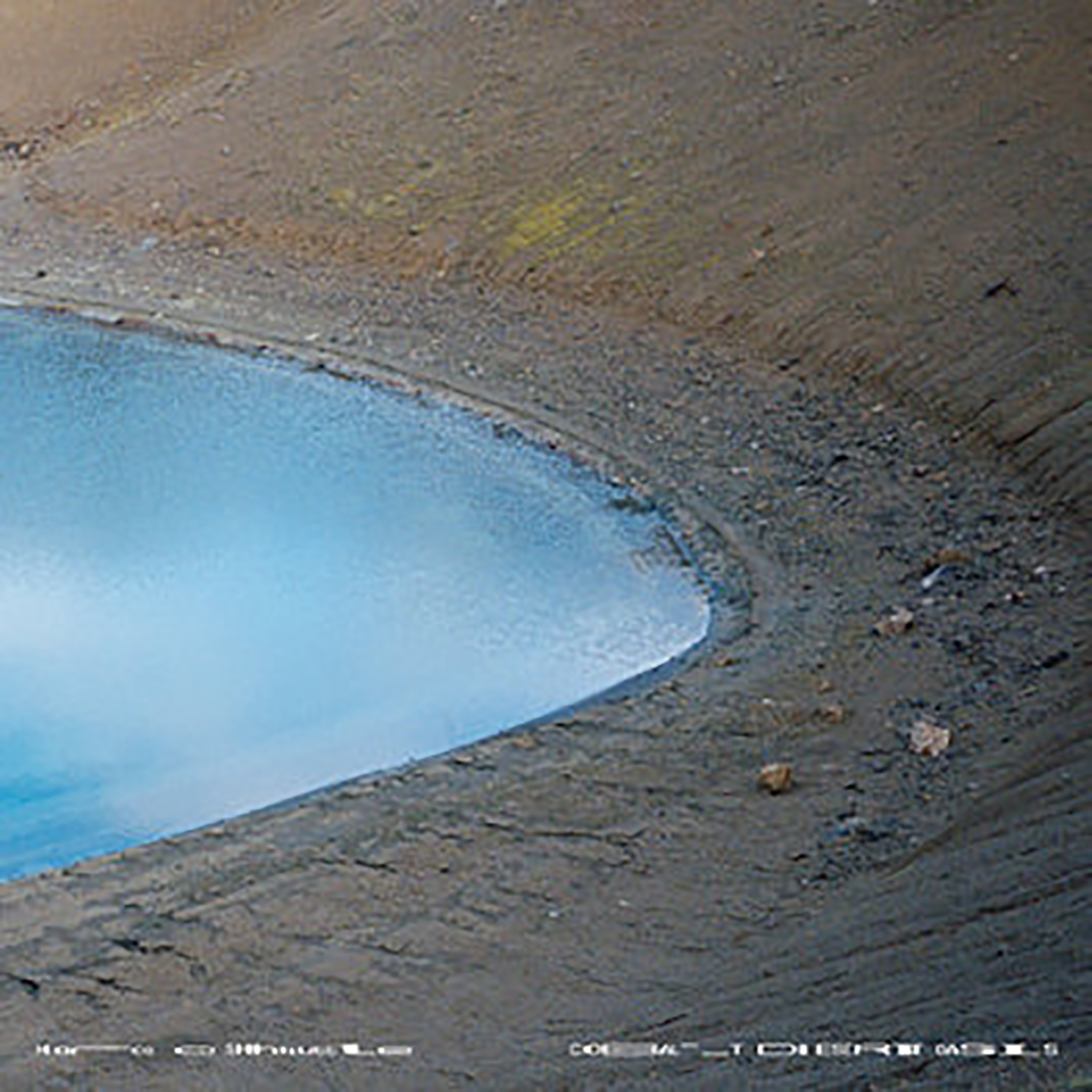
This divergent third album from Berlin-based producer Marco Shuttle is my first exposure to his work, but he has released a handful of killer singles over the last decade in a darkly hallucinatory minimal techno vein akin to Lucy and Rrose. While I would have been thrilled to hear another perfectly crafted single like "Sing Like a Bird" (2014) or "Flauto Synthetico" (2016), Cobalt Desert Oasis is nevertheless a pleasant and semi-radical departure for Shuttle, as it is inspired by field recordings and images collected over two years of travel. I suppose Shuttle has always drawn inspiration from far-flung places very unlike Berlin, but the big difference is that this album uses field recordings and acoustic instrumentation as its raw material and focus rather than just a source of ideas for more dancefloor-targeted work. While this album does not necessary cure me of my belief that Shuttle primarily excels as a singles artist, it was definitely a nice surprise to be blindsided in 2021 by something resembling a lost O Yuki Conjugate classic. And, of course, there are a few great singles lurking here as well.
This album is billed as "a cinematic listening experience where psychedelia, ritualism, and mysticism weave together in a sort of alien soundscape," which is a reasonably accurate characterization, though to my ears it lands much closer to "cool headphone album" than anything conventionally "cinematic" or strikingly otherworldly. Shuttle does strike an unusual balance of traditional sounds and modern technology though, as the stronger pieces feel like a simmering and hallucinatory drum circle enhanced with a steady kickdrum thump. "Danza De Los Voladores" is representative example of the album's baseline aesthetic, as Shuttle whips up a psych-damaged dub concoction over a slow and deep bass drum pulse: birds happily chirp, synths bubble like a witch's cauldron, indigenous flute melodies wander in and out, and a host of hand percussion sounds subtly pan and morph in the periphery. It is quite a likeable and inventive detour from what I would expect from Shuttle, but the songs admittedly blur together a bit aside from the handful of instances where he tweaks the formula with some kind of inspired twist (most pieces stick to relatively narrow tempo comfort zone and the melodies are all quite understated). The most inspired facet of the album is Shuttle's use of a Persian drum called a Tombak, which is presumably the heart of one of the album's strongest pieces, "Tombak Healer," in which a seething, slow-motion kick drum pulse is enhanced with a skittering and panning tour de force of dubby hand percussion. I am also a big fan of the propulsive "Through the Cobalt Desert," which sounds like a relentlessly forward-moving strain of dub-techno birthed in a deep tropical jungle. My personal favorite is probably the sensuous and blearily dreamlike exotica of “Winds of Cydonia” though. How I feel about the remainder of the album is largely a function of how natural/seamless the balance of traditional instruments and electronics feels: some pieces feel like something cool and distinctive, some feel a bit too smooth and straightforward to leave a deep impression. While Cobalt Desert Oasis probably could have been a flawless EP if Shuttle had distilled it down to its four or five best pieces, it makes for a pleasantly immersive focused listening experience. Shuttle is onto something quite good here, but it might take another album or two before this side of his art feels fully realized.
Samples can be found here.
Read More
- Anthony D'Amico
- Albums and Singles
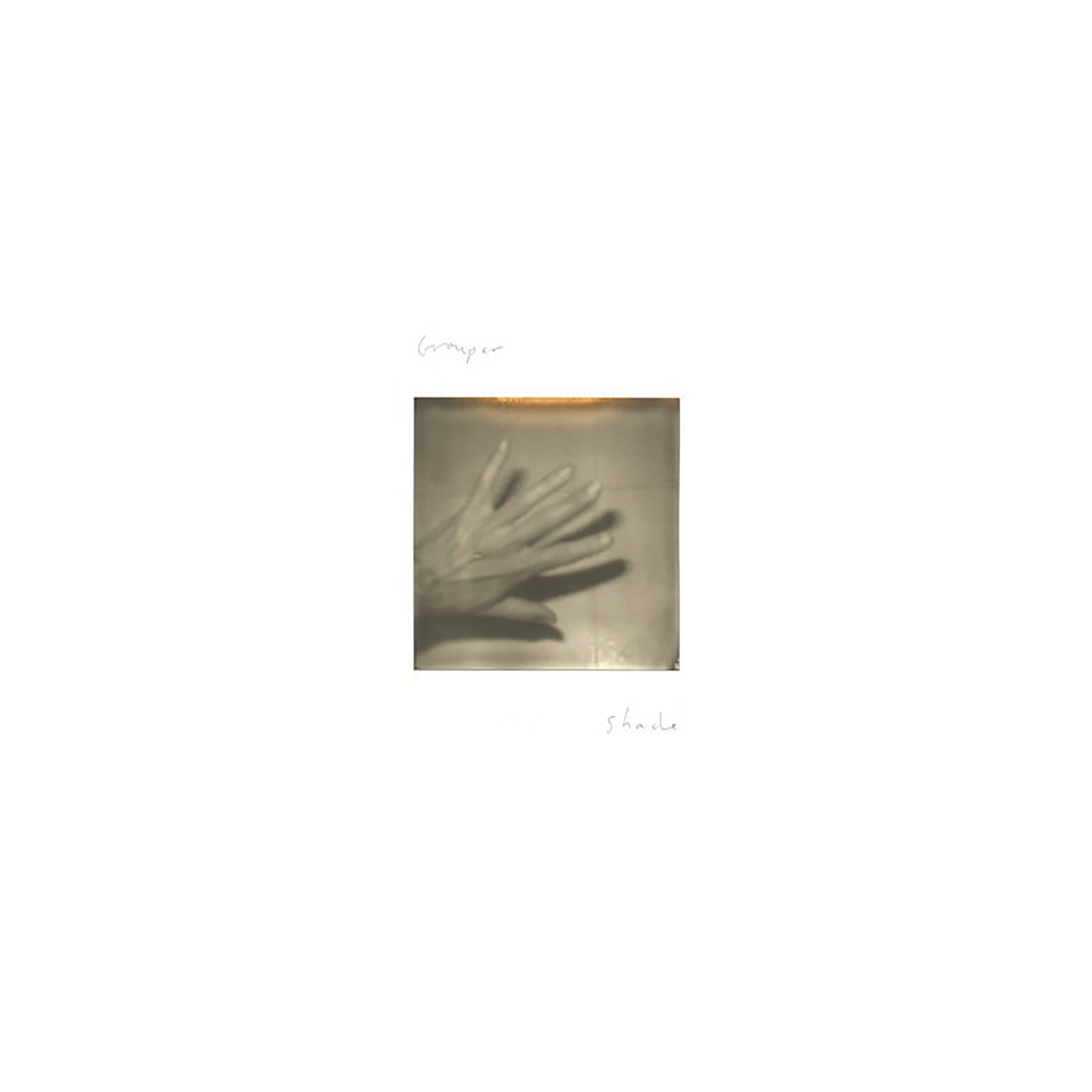 I suppose I have been a devoted Grouper fan since sometime around 2008's Dragging A Dead Dear Up A Hill, but there was a long stretch during The Reverb Years in which I was genuinely mystified by the outsized reverence that people seemed to have for this project (very similar to my experience with The Disintegration Loops, though I love several of Basinski's other albums). In more recent years, however, I have become considerably more convinced that Liz Harris is some kind of iconoclastic visionary (albeit a very slow-moving one), though I am not sure if she is shaping the culture so much as providing a much-needed corrective to its rapidly accelerating and tech-focused trajectory. While my initial impression is that this 12th Grouper full-length is not quite as uniformly strong as some other Grouper albums from recent years, that is less relevant than the fact that it continues Harris's trend towards more intimate, emotionally direct, and beautifully distilled songcraft. In that regard, Shade gives me exactly what I want from a new Grouper album: at least one song that is an absolutely devasting gut punch on the same level of "Parking Lot" and "Living Room." To my ears, that album-defining gem comes in the form of the folky, bittersweet closer "Kelso (Blue Sky)," but there are probably a couple of other sublime and/or unexpected gems destined for semi-permanent heavy rotation in my life as well.
I suppose I have been a devoted Grouper fan since sometime around 2008's Dragging A Dead Dear Up A Hill, but there was a long stretch during The Reverb Years in which I was genuinely mystified by the outsized reverence that people seemed to have for this project (very similar to my experience with The Disintegration Loops, though I love several of Basinski's other albums). In more recent years, however, I have become considerably more convinced that Liz Harris is some kind of iconoclastic visionary (albeit a very slow-moving one), though I am not sure if she is shaping the culture so much as providing a much-needed corrective to its rapidly accelerating and tech-focused trajectory. While my initial impression is that this 12th Grouper full-length is not quite as uniformly strong as some other Grouper albums from recent years, that is less relevant than the fact that it continues Harris's trend towards more intimate, emotionally direct, and beautifully distilled songcraft. In that regard, Shade gives me exactly what I want from a new Grouper album: at least one song that is an absolutely devasting gut punch on the same level of "Parking Lot" and "Living Room." To my ears, that album-defining gem comes in the form of the folky, bittersweet closer "Kelso (Blue Sky)," but there are probably a couple of other sublime and/or unexpected gems destined for semi-permanent heavy rotation in my life as well.
I was a bit surprised to learn that Shade collects songs spanning 15 years, as they convincingly feel like they all could have been birthed from a single extended flash of inspiration in a remote cabin (most pieces feature only hushed vocals and an acoustic guitar, though tape murk is definitely a recurring feature too). According to Harris, "this an album about respite" and "the coast," as one of Shade's primary themes is how our memories, experiences, connections, and selves are shaped and framed by place. Fittingly, Shade was recorded at various places along the Northern California and Pacific Northwest coasts (including a "self-made residency" on a mountain).  Stylistically, this is one of Harris's more nakedly "folky" albums, as there is plenty of fingerpicked acoustic guitar, tender vocal melodies, and a minimum of effects (just flesh, steel, and wood, basically). The album is broken up by a handful of pieces that feel more like soundscapes, but that is mostly because they are songs that are so blearily lo-fi and tape-distressed that they cross over into semi-abstraction.
Happily, some of those hiss-ravaged pieces turn out to be surprise album highlights though, such as the opening "Followed the Ocean," which resembles an achingly gorgeous and ghostly '70s country gem heard through a blown-out car radio. Elsewhere, "Disordered Minds" feels like a killer dreampop song absolutely smothered in tape murk and possibly played at the wrong speed, but it still manages to sound like heaven in spite of that (it reminds me of Russian Tsarlag, but warm and beautiful rather than rotted and disturbing). As far as the more "straight" material is concerned, I am similarly fond of "Pale Interior," which feels like a hazy hypnagogic cover of a Vashti Bunyan classic. That said, the inarguable centerpiece of Shade is the aforementioned "Kelso (Blue Sky)," as the tape fog finally dissipates to reveal a moving and sublime near-masterpiece that feels like I died and woke up in a heaven where Nebraska is a Hope Sandoval album rather than a Bruce Springsteen one (and I love that I can hear every single scrape of Harris's fingers moving across the fretboard). Naturally, all of that adds up to yet another great Grouper album, but the real magic is that Harris's recent work somehow feels like something else altogether (something even better), akin to a getting a long unexpected letter from a beloved yet elusive friend that I am never quite sure I will hear from again.
Samples can be found here.
Read More
- Eve McGivern
- Albums and Singles
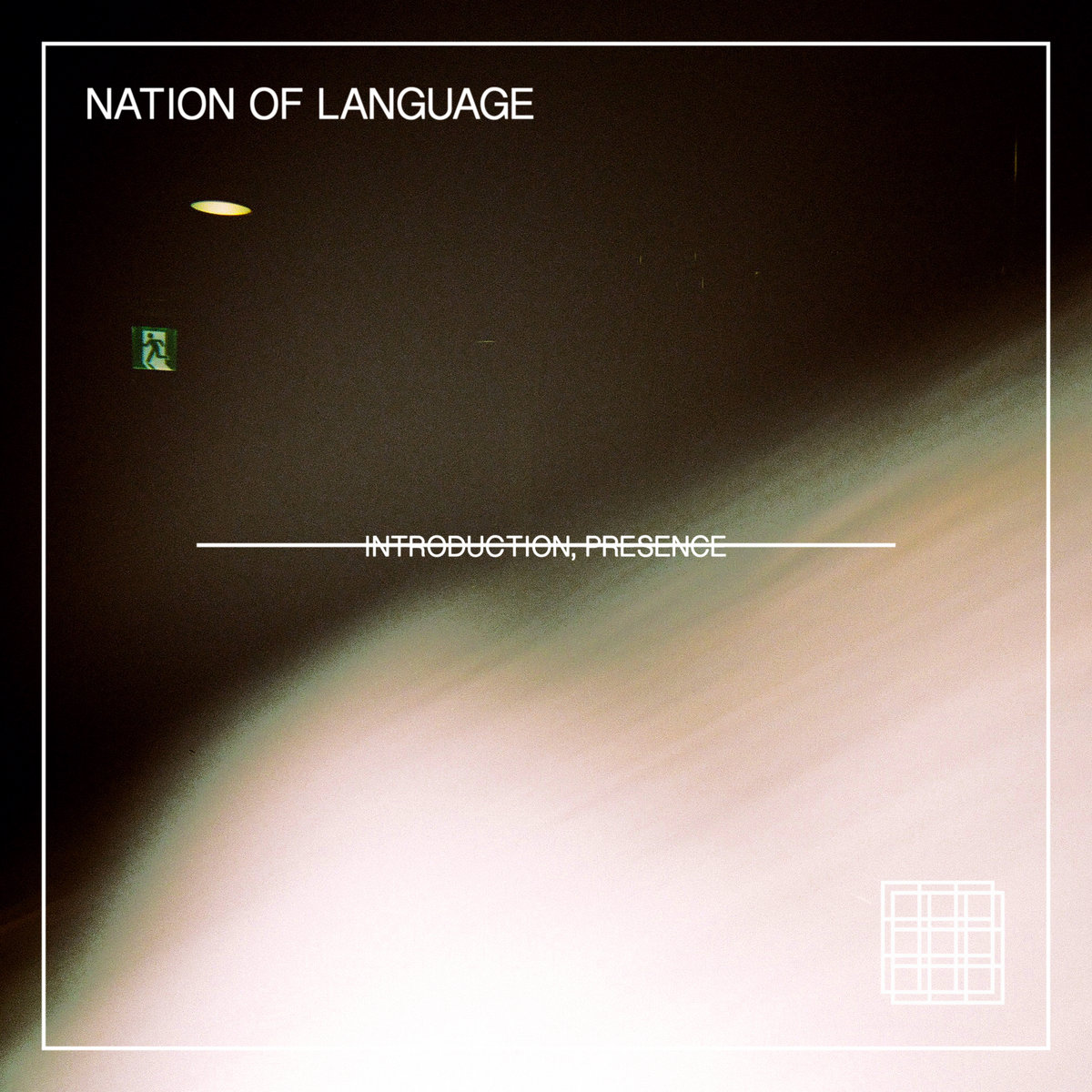 I can comfortably get into complex music at its most intricate, but not all music needs to be this way to fill my soul. The debut from Brooklyn's Nation of Language is rich with eighties new wave vibes, with uncomplicated and passionate melodies evoking warm summer feelings from a bygone time, all the while belying its forlorn lyrical content. Nation of Language started as an homage to the synth-pop of singer Ian Devaney's youth. The band honed and tested their sound through a series of singles over four years before bringing everything together into their full-length debut Introduction, Presence. The apt title implies an introduction to their sound, exuding a genuine and powerful presence to a band that has taken careful care to honor their past with a sound that stands firm in the future.
I can comfortably get into complex music at its most intricate, but not all music needs to be this way to fill my soul. The debut from Brooklyn's Nation of Language is rich with eighties new wave vibes, with uncomplicated and passionate melodies evoking warm summer feelings from a bygone time, all the while belying its forlorn lyrical content. Nation of Language started as an homage to the synth-pop of singer Ian Devaney's youth. The band honed and tested their sound through a series of singles over four years before bringing everything together into their full-length debut Introduction, Presence. The apt title implies an introduction to their sound, exuding a genuine and powerful presence to a band that has taken careful care to honor their past with a sound that stands firm in the future.
Michael Sui-Poi's lush bass is the centerpiece of the group's sound, serving as the foundational melody and providing a deep and driving underlying force. This familiar sound often earns the moniker of post-punk, but there is no mimicry here; listeners may hear inclinations to Joy Division or Human League, but the experience is entirely Nation of Language. Devaney's vocals offset crisp machine-made drum beats and clean synth flourishes, giving every song warmth and passion, a cavalcade of sparkling dream-pop. Yet beneath the dreaminess is a lyrical melting pot of loss and longing, reflecting on the many imperfections of humanity. My favorites "September Again" and "Indignities," are glaring examples of this, and I find myself relating more deeply on repeated listens.
"And they pile up / These indignities / On my laptop / With these indignities / In the paper I don't really read / It says what if there's more than binary / And I don't understand / It's not the way it used to be / All I really wanna say is just cut it out."
Indeed, it's not the way it used to be, and Introduction, Presence evokes what felt like a less complicated era. One thing that remains true is that excellent music can help see one through life in any era; the enchanting hooks of Introduction, Presence serve as a musical rediscovery through a sometimes confusing and challenging present.
Samples can be found here.
Read More
- Administrator
- Albums and Singles
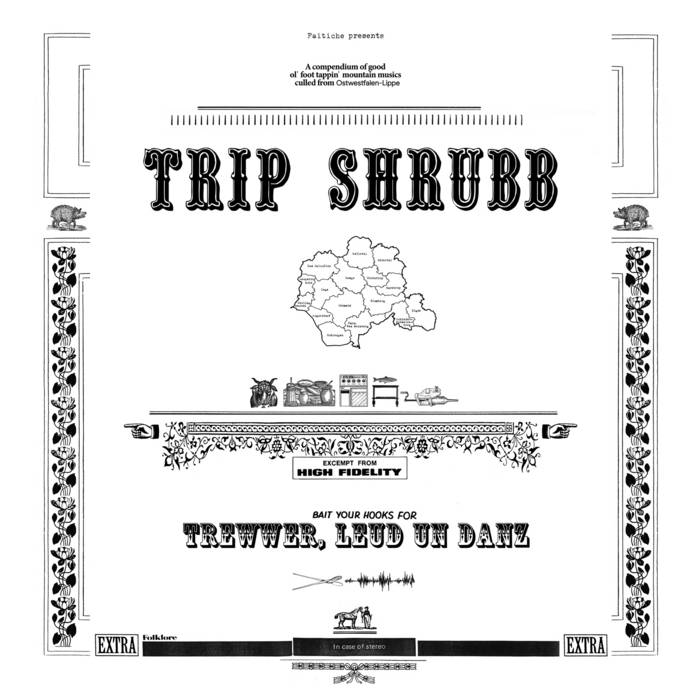 Under a name (Trip Shrubb) taken from a gravestone in Northamptonshire, Michael Beckett presents a cool subterranean selection from his own 84-track transformation of one of the best records ever released: the Anthology of American Folk Music originally compiled by Harry Smith in 1952. Smith, a painter, filmmaker, and obsessive collector of everything from paper airplanes and string figures, to quilts and Ukrainian Easter eggs, curated the Anthology from thousands of 78 RPM records. Trewwer, Leud un Danz is an appropriate companion piece, which matches the obsessive nature of Smith’s vision, serves as a bizarre reminder that a lot of "old, weird, America" comes from older, weirder, Europe, and could also pass for a great soundtrack to Harry Smith’s simply wild experimental films such as Heaven and Earth Magic.
Under a name (Trip Shrubb) taken from a gravestone in Northamptonshire, Michael Beckett presents a cool subterranean selection from his own 84-track transformation of one of the best records ever released: the Anthology of American Folk Music originally compiled by Harry Smith in 1952. Smith, a painter, filmmaker, and obsessive collector of everything from paper airplanes and string figures, to quilts and Ukrainian Easter eggs, curated the Anthology from thousands of 78 RPM records. Trewwer, Leud un Danz is an appropriate companion piece, which matches the obsessive nature of Smith’s vision, serves as a bizarre reminder that a lot of "old, weird, America" comes from older, weirder, Europe, and could also pass for a great soundtrack to Harry Smith’s simply wild experimental films such as Heaven and Earth Magic.
I am reminded of Eric Cantona, the footballer who faced criminal charges and widespread moral outrage for leaping into a hostile crowd and kung-fu kicking then thumping a particularly obnoxious fan. Asked if he wished to express regret, Cantona replied "I have one regret, I would have loved to have kicked him even harder."  Well, no one is going to accuse Beckett of half-measures. In fact, I suggest that the reason he has sampled and "effected" the living blood, skin, and bone (plus marrow) daylights out of the original source material is because he loves it so much. Either way, he has given it an absolute shellacking. This is no pale representation of the real thing. Nor is it a smug authentication by an earnest arty type in exchange for them basking in reflected glory. The icing on this sauerkraut is that Beckett has even further disguised the material by translating song titles into the "Low German" dialect. Harry Smith himself would not recognize them in a blind hearing. I gave up trying to work out track titles after, possibly, cracking a couple. The psycho jet-lagged juju-dub rendition of "Wake up, Jacob" (originally by Prince Albert Hunt’s Texas Ramblers) lurches and swings so strangely that it could get away with being retitled "Jackie Mittoo’s Shoes In a Tumble Dryer (dub)".
"Pülper" could be taken from Sister Mary Nelson’s "Judgement" but if so the impossible has occurred and her gritty voice has acted as a lathe and smoothed the recorded sound of her gritty voice into a completely unexpected ambient drone. These examples, if correct, show Becket embracing the Cajun dance and the Gospel aspects of the Anthology which were mostly ignored by 1950s and 1960s folk revivalists and country blues enthusiasts. What he has also done is to strip away what Robert Cantwell identified as the aesthetic, anthropological, curatorial, and political aspects which have become attached to the Anthology, while thankfully leaving intact the weird and whimsical spirit of the music.
Beckett muffles and strips these tunes down to such an embryonic state he could almost be soundtracking ultrasound images. He stretches, reshapes, muffles and mauls them into a primitive throbbing techno-gumbo beyond all recognition. It is hard to describe music which resists concrete analysis. While it never completely resembles either extreme, much of the album hits a fluctuating sweet spot between romantic Ray Noble-derived amnesia ballroom noir and the kind of can't-look-away shovel-scraping nocturnal terror of the Twin Peaks:The Return episode Got a Light? Beckett clearly has an idiosyncratic wit of which Harry Smith may well have approved. After all, a glance at Smith’s own accompanying descriptions to each original track reveals the opposite of a dry encyclopedic style: Misanthropic Drunk Finally Kicks The Bucket; Town Rejoices. Guthrie Tune Objects To Sanctimonious Berlin Anthem; Reappropriated As Emblem Of Patriotism, American Landscape. Man Encounters Ex-Lover ReEmerged As Apparition; Ghost Asks How He Likes His New Fling. Anyone who considers the Anthology to be a sacred untouchable document may wish to know, or remember (as Katherine Skinner has noted) that there was little critical hoopla or sales to greet the 1952 release. It was not mentioned in the popular press until 1958 (in the folk music magazine Sing Out!, which did not even review the full collection until 1969). And, as Skinner adds, in the first year the Folkways label only sold fifty albums, and forty-seven of those were to colleges and libraries. I reckon Trewwer, Leud un Danz can beat that.
I would pay good money to be able to hear Harry Smith's response to this record, almost as much as I would shell out on ringside seats for Nina Simone's reaction to the recent project involving a piece of her discarded gum. Meanwhile, perhaps Trip Shrubb can next take a crack at the 2020 Dust-to-Digital label release of the Anthology b-sides, or at least give those pieces which were omitted for racist or otherwise offensive lyrics the sound thrashing they may deserve.
Read More
- Administrator
- Albums and Singles
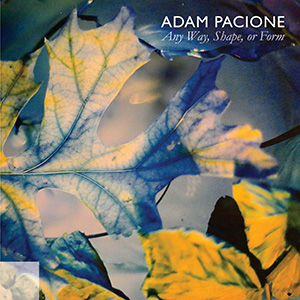 Austin based composer and photographer Adam Pacione's recorded work has been largely digital over the past 10 years or so, which makes this lavish four disc collection all the more significant. Any Way, Shape, or Form complies 2009's Still Life series of subscription only 3" CDRs alongside some other unreleased and rare material from the same era, based around material recorded between 1999 and 2009. In some ways the box is a massive undertaking, though split into comfortably bite sized pieces that perfectly capture Pacione's brand of unique ambient work, it is enjoyable in any listening arrangement.
Austin based composer and photographer Adam Pacione's recorded work has been largely digital over the past 10 years or so, which makes this lavish four disc collection all the more significant. Any Way, Shape, or Form complies 2009's Still Life series of subscription only 3" CDRs alongside some other unreleased and rare material from the same era, based around material recorded between 1999 and 2009. In some ways the box is a massive undertaking, though split into comfortably bite sized pieces that perfectly capture Pacione's brand of unique ambient work, it is enjoyable in any listening arrangement.
Across these 16 compositions, Pacione works largely with gentle tones that he layers and expands, with a notable amount of consistency from piece to piece. This makes sense given that 14 of them formed a formal series, with two unreleased works from the same era included. Generally speaking the pieces on the first disc have an expansive, gentle drift to them. "A Still Life" and "Dyestuffs" both lead from soft tones, the former transitioning more towards explicit melody in its later segments, the latter from the onset. There are some bleaker, grimier moments towards the end of "They Live By Night" but overall the pieces here are made up of shimmering, beautiful, yet varied tones.
By contrast, more than a couple works on the second disc feature Pacione emphasizing rhythmic qualities, like the looped structure of "Split at the Core," complete with some dramatic, cinematic sweeps of sound."Evening Colors" follows with an almost oceanic buoyancy, taking on some slightly fuzzy, dissonant moods later on."Thinning Silver" is largely layered tones and melodies, but some very synth-like pulsations bring a sense of rhythm and variation.Disc three is where Pacione leans a bit into lower frequencies, with similarly ambient themes as earlier, but heavier on the low end."Ferro Organ" sounds like either the titular instrument or a harmonium, slowly enveloping the mix with the right amount of bassy rumble.On "Nodal Point" Pacione toys with the volume dynamics and some filters, resulting in another standout work.
The final disc also has some unique moments, such as the darkness and distortion of "A Delicate Giant," which may be structurally similar to other pieces, but the final product is something distinctly different."Lumen Organ" is at first a sparse, open work of droning tones, but what sounds like cassette tape manipulation and mangling gives it a unique, and somewhat unsettling quality.All of the material on Any Way, Shape, or Form was obviously created with the 3" CD format in mind, with most pieces sitting between 15 and 19 minutes in length.For this type of music it makes perfect sense.These are mostly light, slightly melodic ambient works, and it is just the right duration to establish a mood, with enough room for change to keep things interesting but never linger too long.Either taken individually, on a disc by disc basis, or all four plus hours in one sitting, Pacione's work captivates, carefully balancing thematic unity and consistency, while still giving each separate piece its own feel, reflecting his artistry and understated touch beautifully.
Samples can be found here.
Read More
- Anthony D'Amico
- Albums and Singles
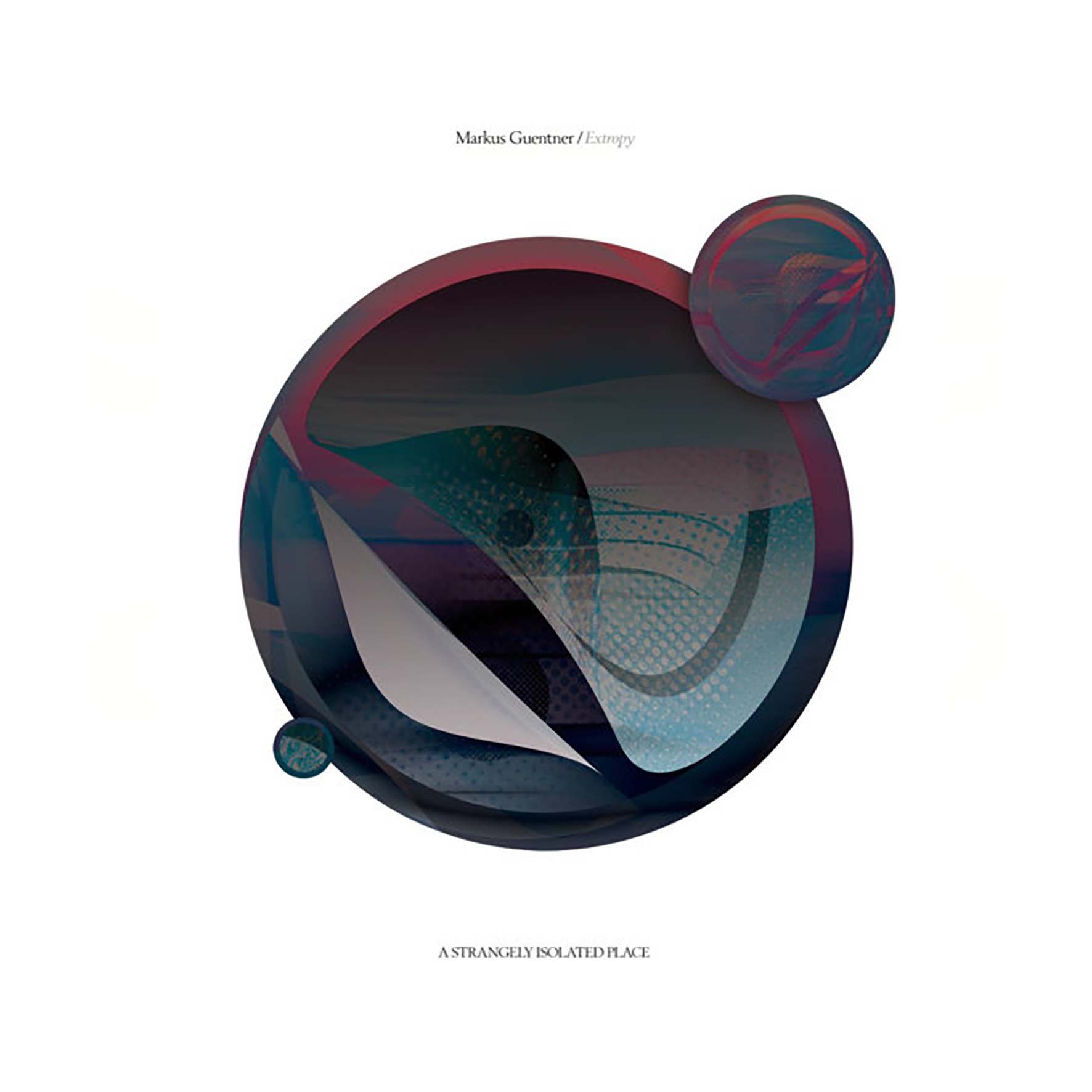 It has admittedly been a while since I have actively followed this German composer's work, but his 2001 debut album (In Moll) spent quite some time in heavy rotation for me during the early 2000s dub- and ambient-techno boom. In more recent years, Guentner has jettisoned the "techno" part of his previous aesthetic and devoted himself to an acclaimed run of space-inspired ambient opuses on LA's A Strangely Isolated Place. Accordingly to Guentner, Extropy "marks the final chapter in an accidental triptych of astronomy-related exploratory albums" that began with 2015's Theia.  While the previous two epics in the series drew conceptual inspiration from the birth of the moon and the earth's relation to the largely unknown and possibly infinite universe, this latest release focuses on "the indefinite growth of the life we hold so dearly." More specifically, Guentner was fascinated by "a pseudoscientific prediction that human intelligence and technology will enable life to expand in an orderly way throughout the entire universe." While I personally expect nothing but entropy instead and note that this album has more of an elegiac feel than an optimistic one, there is no denying that Guenter knows how to make an absorbing and beautifully crafted album. In fact, he may be a bit too good at it, as Extropy would be a bit more memorable if he allowed more sharp edges and eccentricities to creep into his art. That said, this album still seems like it would be one hell of a challenge to top as far as billowing ambient cloudscapes are concerned.
It has admittedly been a while since I have actively followed this German composer's work, but his 2001 debut album (In Moll) spent quite some time in heavy rotation for me during the early 2000s dub- and ambient-techno boom. In more recent years, Guentner has jettisoned the "techno" part of his previous aesthetic and devoted himself to an acclaimed run of space-inspired ambient opuses on LA's A Strangely Isolated Place. Accordingly to Guentner, Extropy "marks the final chapter in an accidental triptych of astronomy-related exploratory albums" that began with 2015's Theia.  While the previous two epics in the series drew conceptual inspiration from the birth of the moon and the earth's relation to the largely unknown and possibly infinite universe, this latest release focuses on "the indefinite growth of the life we hold so dearly." More specifically, Guentner was fascinated by "a pseudoscientific prediction that human intelligence and technology will enable life to expand in an orderly way throughout the entire universe." While I personally expect nothing but entropy instead and note that this album has more of an elegiac feel than an optimistic one, there is no denying that Guenter knows how to make an absorbing and beautifully crafted album. In fact, he may be a bit too good at it, as Extropy would be a bit more memorable if he allowed more sharp edges and eccentricities to creep into his art. That said, this album still seems like it would be one hell of a challenge to top as far as billowing ambient cloudscapes are concerned.
According to Extropy's description, Guentner views the album as something of a return to "what some may call his early, classic sound." I am not sure how much I agree, as I would describe much of the album as classic/textbook ambient (if unusually well-executed), as most pieces are a feast of frayed, blurred, grainy and billowing synth drones. However, the closing "Here" does break from the pack with a subtle nod to Guentner's techno past, as deep bass tones gradually creep in to provide a sense of structure and forward motion. To my ears, it calls to mind a ghostly abstraction of one of Seefeel's more dubby and vaporous cuts. That is always welcome territory, but I also loved the unexpectedly sharp feedback-like tone that repeatedly burns through the bleary haze of soft-focus droneage.
While easily one of my favorite pieces on the album, "Here" is also significant for helpfully illustrating everything there is to know about Extropy: as far as ambient music is concerned, Markus Guentner is a consummate professional with exacting standards, so the album's baseline level of quality is quite high. However, "skillfully executed" is not the same thing as "memorable," so I especially appreciate the moments in which Guenter veered off-script into more distinctive territory. My favorite of those moments is "Everywhere," which beautifully enhances Guenter's cloud-like swells with slicing harmonic-like streaks, a submerged chorus, and some beautifully harmonizing brass drones. Aside from that, "Everywhere" also nods to Guentner's rhythmic past, as one section feels like warm washes of static breaking up on the shores of a brooding bass pattern. Elsewhere, "Concept of Credence" beautifully tugs at the heart strings with a crescendo of ringing and reverberant church bells that evoke the picturesque square of a cobblestoned dream village. The opening "Nowhere" is yet another favorite, as streaks of sharp feedback carve through a fog of flickering ghost melodies. Nearly all of these seven pieces are excellent though. At the moment, my gut tells me that Extropy is a very solid album with a handful of great pieces, but one that could benefit from more intrusions from field recordings, melodies, and sharper textures. I seem to enjoy it more with each listen, however, so I may belatedly proclaim it to be a masterpiece in another five years or so (when my patience and appreciation for nuanced emotional shadings finally catches up with Guentner's own).
Samples can be found here.
Read More
- Anthony D'Amico
- Albums and Singles
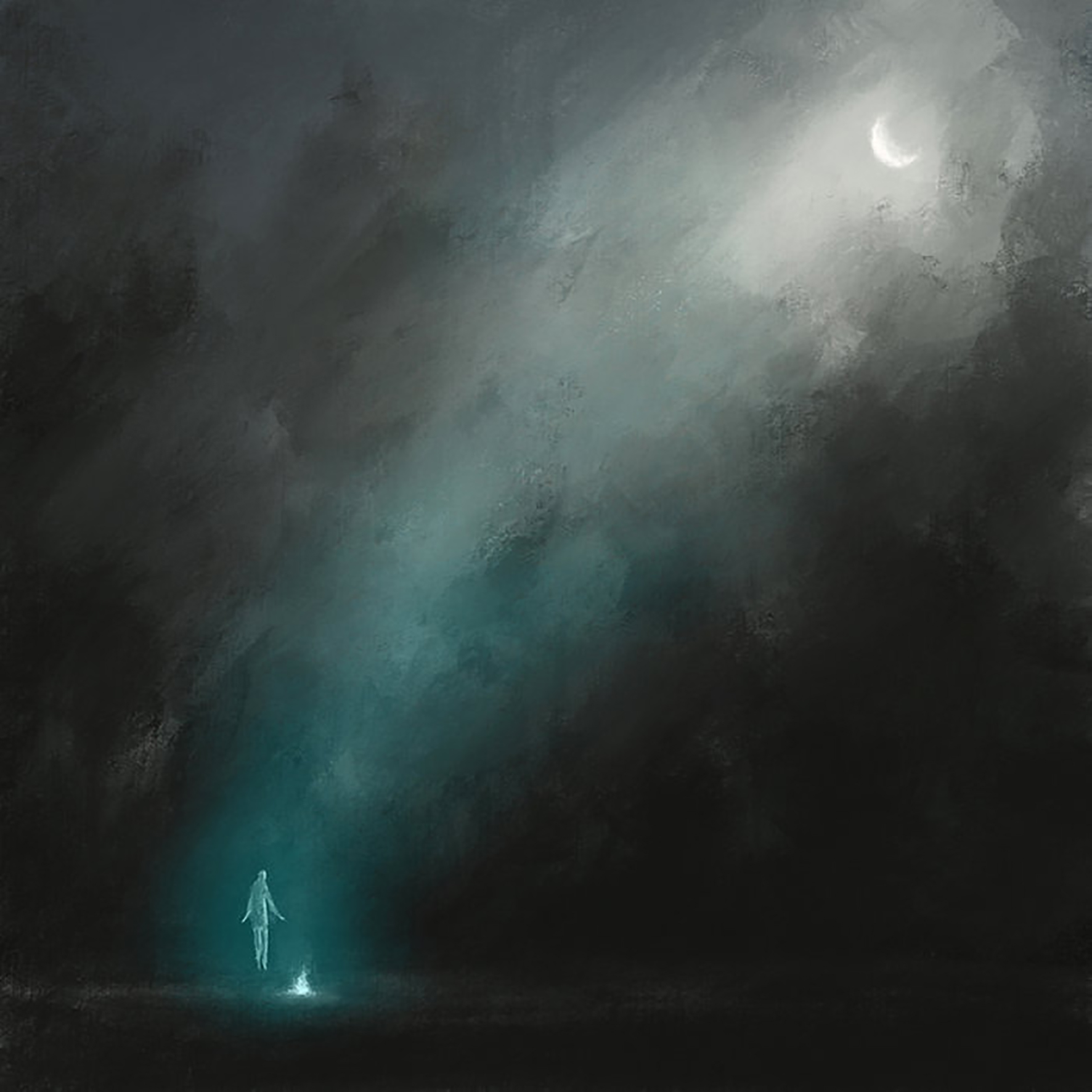 This is the second album from Slovakian neo-classical composer Lukáš Bulko and his first for Lost Tribe Sound (Ceremony is part of the label's "Salt & Gravity" series). Fittingly, Lost Tribe's Ryan Keane was introduced to Bulko’s work by William Ryan Fritch, as the two artists occupy a similar blurry stylistic nexus where film score, classical composition, ambient music, and experimentation meet with oft-unique results. In short, this is a quintessential Lost Tribe Sound album, as Bulko's unusual compositional approach and eclectic choice of instruments elevate this album into something considerably more compelling than most neo-classical albums that find their way to my ears. In that regard, the epic "In The Service of Life" is Ceremony's mesmerizing centerpiece, as Bulko inventively enlivens warm ambient drones with out-of-focus smears of dissonance, gurgling didgeridoo, and surprisingly prominent jaw harp twangs. While not quite everything on Ceremony ascends to the same level, the handful of pieces where Bulko is truly inspired are quite revelatory, as he is in a class by himself as far as compositional fluidity is concerned.
This is the second album from Slovakian neo-classical composer Lukáš Bulko and his first for Lost Tribe Sound (Ceremony is part of the label's "Salt & Gravity" series). Fittingly, Lost Tribe's Ryan Keane was introduced to Bulko’s work by William Ryan Fritch, as the two artists occupy a similar blurry stylistic nexus where film score, classical composition, ambient music, and experimentation meet with oft-unique results. In short, this is a quintessential Lost Tribe Sound album, as Bulko's unusual compositional approach and eclectic choice of instruments elevate this album into something considerably more compelling than most neo-classical albums that find their way to my ears. In that regard, the epic "In The Service of Life" is Ceremony's mesmerizing centerpiece, as Bulko inventively enlivens warm ambient drones with out-of-focus smears of dissonance, gurgling didgeridoo, and surprisingly prominent jaw harp twangs. While not quite everything on Ceremony ascends to the same level, the handful of pieces where Bulko is truly inspired are quite revelatory, as he is in a class by himself as far as compositional fluidity is concerned.
The brilliance of this album is a bit understated and sneaky, as Bulko's work can often seem mannered and conventionally lovely in a way that is promising for a bright future in film scoring, yet bodes poorly for attaining my passionate lifelong fandom. However, first glances can be deceptive and Ceremony's stronger pieces take some very inspired detours into rarified terrain, which makes this is an excellent album for deep listening, as Bulko is extremely skilled at allowing an organic psychedelia to bleed into his slow-burning compositions. A healthy amount of Ceremony's inspiration comes from indigenous people, as Bulko has a deep interest in traditional/sustainable cultures and their rituals (he is considerably less keen on humanity's current direction). In fact, the album's first six pieces were actually rooted in ceremonial field recordings and indigenous instrument performances from Richard Grossman and Serena Gabriel (shakers, flutes, etc.). The other secret star of the album is Ján Kruzliak, Jr., who contributed improvised and oft-gorgeous violin and box cello performances to the same pieces. When all of those facets are in perfect harmony and balance, as they are in "New World Healing Center," the results are incredibly compelling and beautiful. Initially, "Healing Center" feels like a slowly heaving and lurching bit of rustic ambient, but it achieves a wonderfully shambling and precarious sense of forward motion en route to a swooningly gorgeous violin crescendo. While I greatly appreciate Bulko's knack for groaning, smearing, breathy and whistling textures, his true genius lies in the organic fluidity of his compositions. Part of that effect is likely due to the underlying field recordings and Kruzliak's improvisations, yet that does not make the feat any less impressive. When Bulko is at his best, his work sounds like it is mirroring the elegant movements of a dancer's body in real time. While he does not achieve that masterful illusion with the entire album, both "Healing Center" and "In the Service of Life" are quietly sublime stunners and several of the other pieces fleetingly reach similar heights. The album's other lengthy pieces (“From Untold Pains” and “Flight Over Utopia”) are deeply immersive too, but "Healing Center" and "In The Service of Life" are the singular gems that make this an album worth seeking out.
Samples can be found here.
Read More
- Anthony D'Amico
- Albums and Singles
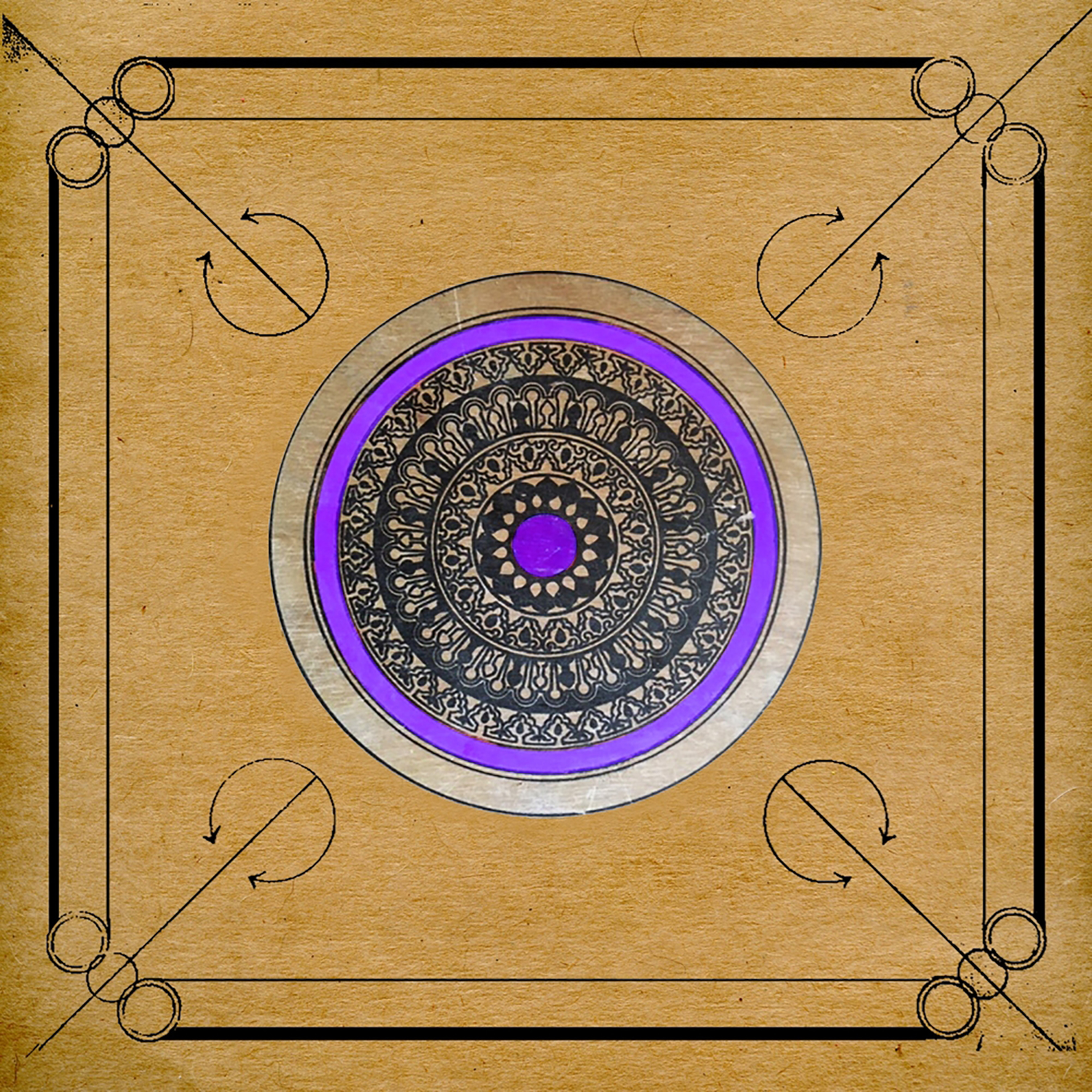 This is one of those albums that is likely destined to instantly become some kind of sought-after cult classic, which is amusingly common territory for both of the artists involved. In any case, The Universal Veil is entirely new to me, which makes a lot of sense in some ways (as far as Discogs and Bandcamp are concerned, the project does not exist) and does not make any sense at all in others (Helios/Hind basically checks every single possible box for "things I like"). As far as I can tell, however, Hood Faire's David Chatton Barker and Sam McLoughlin (Samandtheplants, Tongues of Light, etc.) have been performing live together for years under this guise and this album is something of a culminating event for the project, as the duo have collaged fragments of their past performances into a hallucinatory full-length of ravaged lo-fi tape experiments and something akin to "ethnological forgeries" like Harappian Night Recordings' classic The Glorious Gongs Of Hainuwele (or a chopped and screwed trip through the more outré side of Sublime Frequencies discography). Needless to say, that means Helios/Hind sets a course quite far out into the shadowy psychedelic fringes, which is exactly what I would hope for when two artists this singular come together.
This is one of those albums that is likely destined to instantly become some kind of sought-after cult classic, which is amusingly common territory for both of the artists involved. In any case, The Universal Veil is entirely new to me, which makes a lot of sense in some ways (as far as Discogs and Bandcamp are concerned, the project does not exist) and does not make any sense at all in others (Helios/Hind basically checks every single possible box for "things I like"). As far as I can tell, however, Hood Faire's David Chatton Barker and Sam McLoughlin (Samandtheplants, Tongues of Light, etc.) have been performing live together for years under this guise and this album is something of a culminating event for the project, as the duo have collaged fragments of their past performances into a hallucinatory full-length of ravaged lo-fi tape experiments and something akin to "ethnological forgeries" like Harappian Night Recordings' classic The Glorious Gongs Of Hainuwele (or a chopped and screwed trip through the more outré side of Sublime Frequencies discography). Needless to say, that means Helios/Hind sets a course quite far out into the shadowy psychedelic fringes, which is exactly what I would hope for when two artists this singular come together.
The first side of the album ("Helios") opens with stuttering, chirping metal strings that feel like the work of some kind of Remko Scha-style contraption, but things quickly settle into a bleary, ramshackle groove of eerie synth atmospheres, hollow-sounding percussion, and loads of tape hiss and murk. Naturally, that section is the album's "single" of sorts ("The Camel"), but it is basically just an unusually melodic 4-minute stretch of a sound collage that spans an entire side of vinyl. As the rest of the piece unfolds, it variously resembles slow-motion exotica, The Gag File-era Aaron Dilloway, The Shadow Ring-style "found footage" creepiness, and a drugged gamelan ensemble collapsing from exhaustion, dropping things, and wandering off. For the most part, I would describe the aesthetic as something akin to fragments of Nonesuch Explorer-esque tribal field recordings filtered through blown speakers and ravaged tape, but occasionally some other elements like laughter and party sounds drift in as well. Unsurprisingly, the "Hind" side offers more of the same phantasmagoric miasma of cool tribal/junkyard percussion motifs, precarious keyboard melodies, and tape ruin, but it seems to have more of an "animal" element than the "Helios" side. At times, it is even weirdly beautiful, as it is when a wonderful stomping and shuffling groove dissolves into a coda of warm, bleary drones. In general, however, "Hind" feels like a ravaged recording of a gamelan procession colliding with a badly worn VHS tape of German Expressionist Horror at a lysergic bird sanctuary. That is certainly quite a compelling illusion to linger in and Chatton Barker and McLoughlin thankfully manage to avoid ever breaking that fragile spell of strange and broken otherworldliness. While there are only a couple of "set piece" moments in which Helios/Hind coheres into an especially focused and striking passage, such interludes are mostly just the icing on a cake of wonderfully immersive, gnawed, and gnarled outsider mindfuckery.
A sample can be found here.
Read More
- Administrator
- Albums and Singles
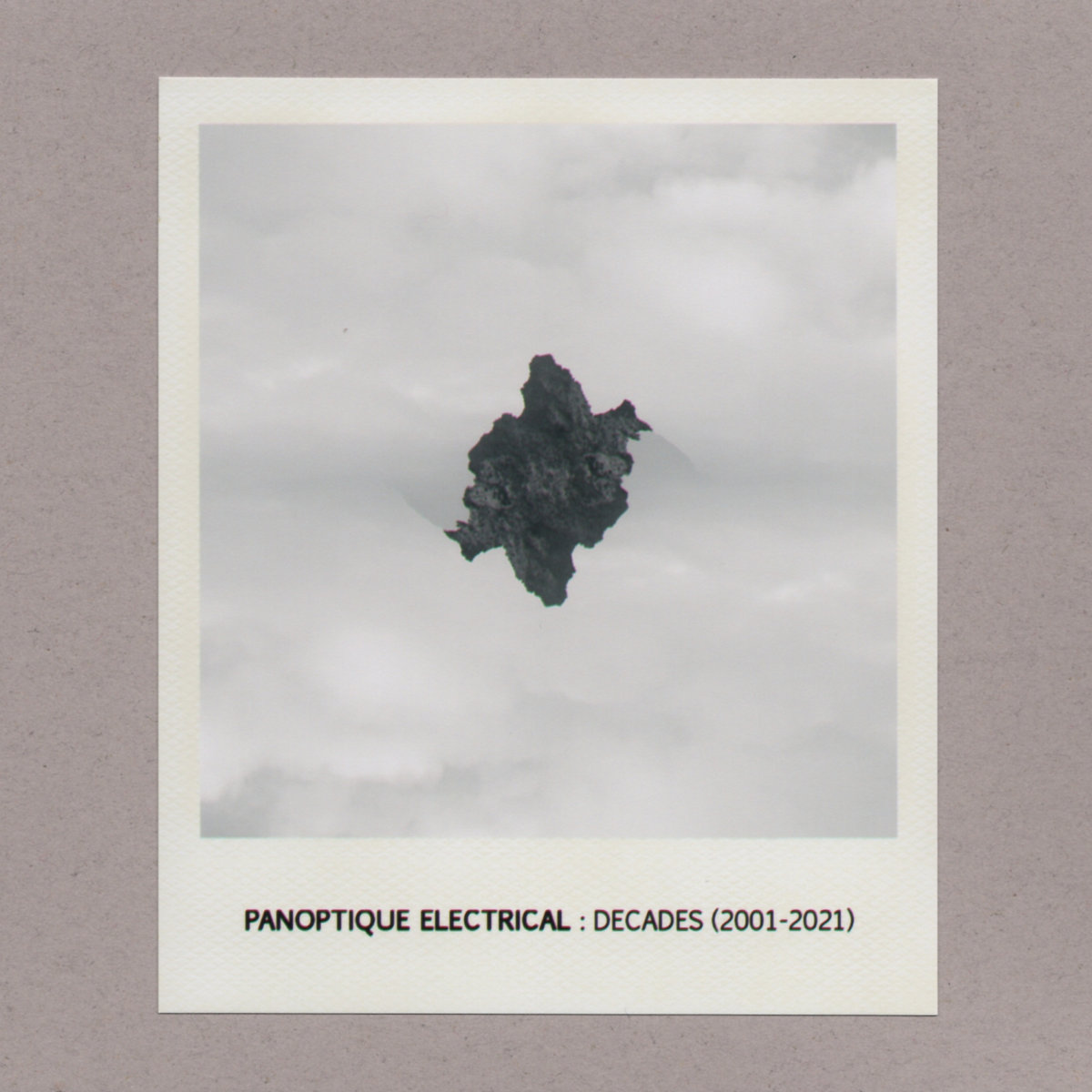
Sound In Silence is proud to welcome back Panoptique Electrical, presenting his new album Decades (2001-2021), an era-spanning compilation of ambient works, experimental scores and soundtracks.
This is his fourth album on the label after the highly acclaimed Disappearing Music For Face in 2016, Quiet Ecology in 2017 and Five Pianos in 2020.
For over twenty years Jason Sweeney, based on Kaurna Country in South Australia, has been composing and recording either solo, in various electronic bands (Other People’s Children, Pretty Boy Crossover) and under the composer alias of Panoptique Electrical. He has also been directing and creating interactive works for the internet, making experimental films, curating projects for galleries and theatre spaces and has collaborated with and composed for some of Australia’s leading performing arts companies, artists and organisations.
Decades (2001-2021), Panoptique Electrical’s eighth full-length album, spans 20 years of compositions over 70 minutes and 31 tracks. Starting in 2001, with pieces made from lo-fi synth drones, sampled loops and broken pianos, taking us through to more recent works featuring layered atmospheric strings, processed piano, field recordings, cinematic cello performed by frequent collaborator Zoë Barry and cut-up vocal pieces performed by Caroline Daish, Decades (2001-2021) perfectly blends melancholic ambient music, modern classical composition, experimental electronics and evocative soundscapes.
Exquisitely mastered by Room40’s Lawrence English, Decades (2001-2021) is an epic, but personal, record that takes us into the emotional landscape of Sweeney’s compositional world.
More information can be found here.
Read More
- Administrator
- Albums and Singles
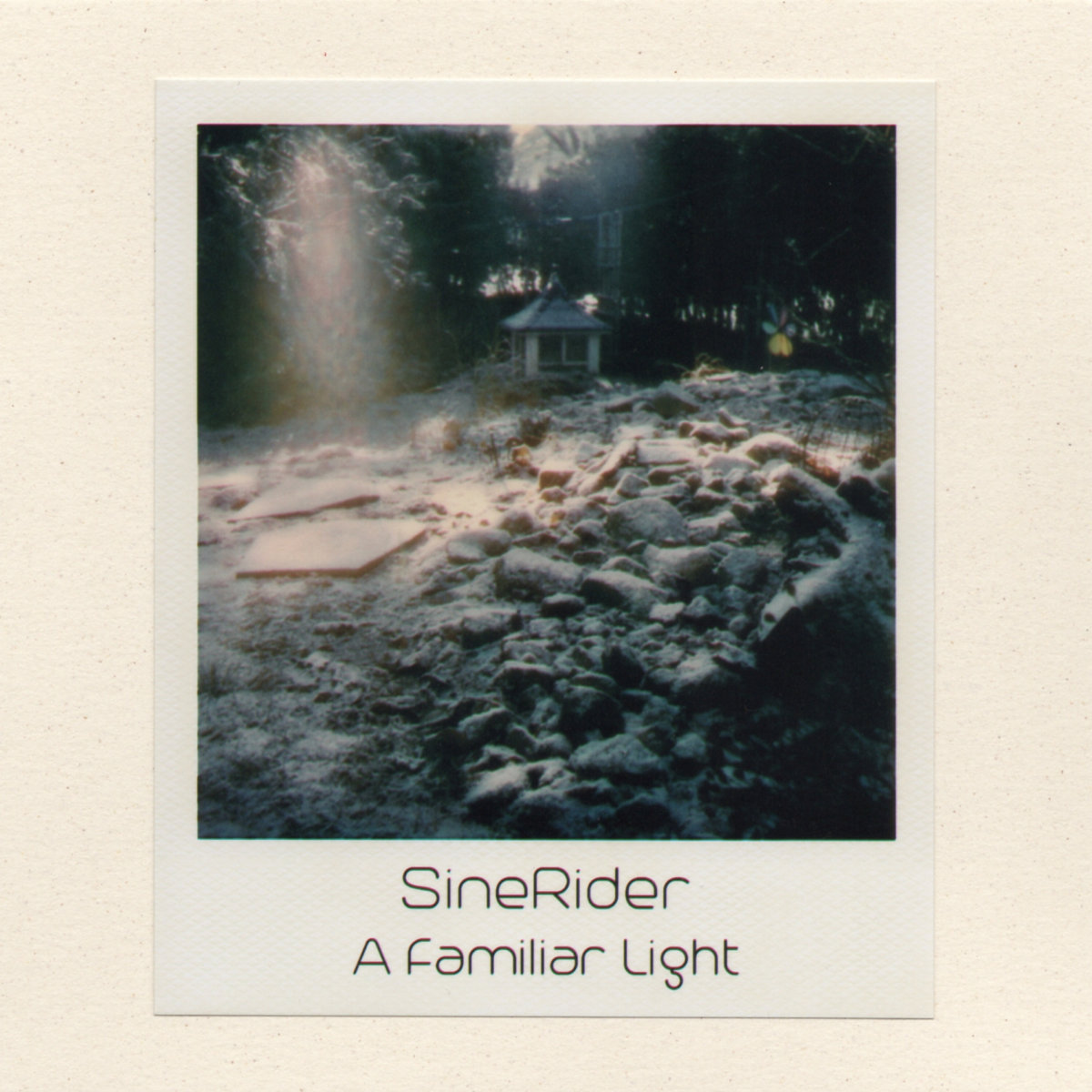
Sound In Silence is happy to announce the return of SineRider, presenting his new album A Familiar Light.
This is his second album on the label after the highly acclaimed Four Years Away in 2018.
SineRider is the solo project of Berklee College of Music composer Devin Powers, based in Norwood, Massachusetts. For over a decade, he has been producing his sublime music, ranging from ambient and electronica to shoegaze and post-rock, having many releases on labels such as Sun Sea Sky, Archives, Dronarivm and others, or self-released. He has also recorded instrumental music of a variety of genres like indie, slowcore, lo-fi, dubstep and 8-bit, under many different aliases such as Senseed, Bleepy Bloopy, Hooting Everywhere and Reanu Keeves, while he is also one half of the projects Lakewaves and Introspecter, along with Graham Marlowe and Brian Stegmann, respectively.
A Familiar Light, SineRider’s new full-length album, features eleven new compositions of ambient soundscapes, calming atmospheres and blissful melodies. Powers blends seamlessly soothing pad layers, warm synths, delicate piano melodies, dreamy chimes, hypnotizing drones and warped tape loops, to create A Familiar Light, a captivating album which appeals to all fans of ambient pioneers such as Brian Eno, Harold Budd and Steve Roach, and beatless Boards Of Canada and Helios.
More information can be found here.
Read More

